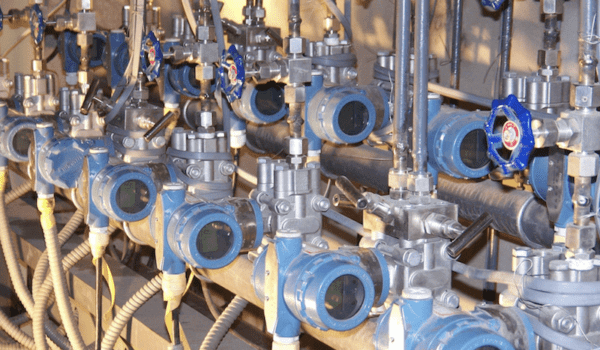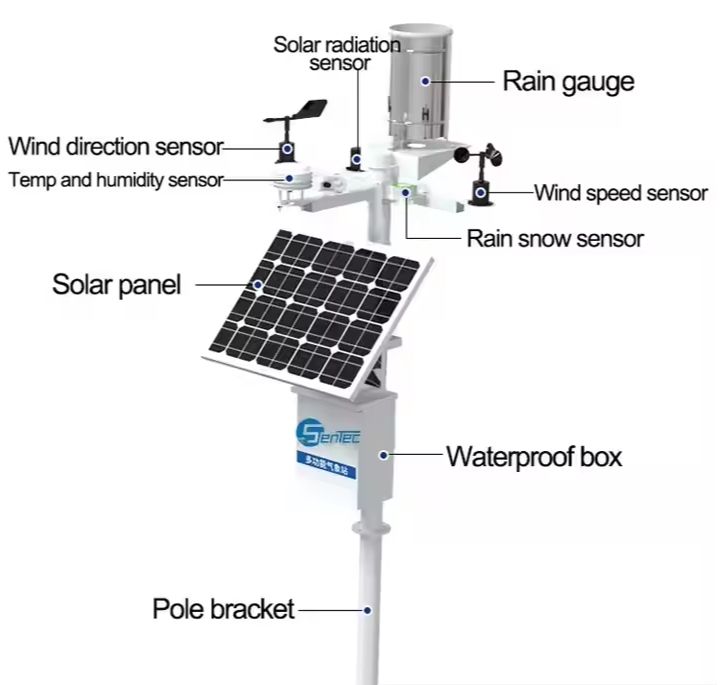Common pressure sensors are divided into 5 types. The following describes the principles and applications of these five types:

1. Piezoelectric pressure sensors:
Principle: It is mainly due to the principle of the formation of the piezoelectric effect. The piezoelectric materials mainly used in piezoelectric sensor level gauges include quartz, potassium sodium tartrate and ammonium dihydrogen phosphate. Among them, quartz|silicon dioxide is a natural crystal, and the piezoelectric effect is found in this crystal. Within a certain temperature range, the piezoelectric properties always exist, but after the temperature exceeds this range, the piezoelectric properties disappear completely. . High temperature is the so-called “Curie point”. Since the electric field changes little with the change of stress, that is, the piezoelectric coefficient is low, quartz is gradually replaced by other piezoelectric crystals. The piezoelectric effect is applied to polycrystals, such as piezoelectric ceramics, including barium titanate piezoelectric ceramics, PZT, niobate piezoelectric ceramics, lead magnesium niobate piezoelectric ceramics, and the like.
Application: Piezoelectric sensors are mainly used in the measurement of acceleration, pressure and force. Piezoelectric accelerometer is a commonly used accelerometer. It has the advantages of simple structure, small size, light weight and long service life. Piezoelectric accelerometers have been widely used in vibration and shock measurement of aircraft, automobiles, ships, bridges and buildings, especially in the fields of aviation and aerospace. Piezoelectric sensors can also be used to measure combustion pressure and vacuum measurements inside the engine. It can also be used in the military industry, for example, it is used to measure the change of the chamber pressure and the shock wave pressure of the muzzle at the moment when the gun bullet is fired in the chamber. It can be used to measure both large and small pressures. Piezoelectric sensors are also widely used in biomedical measurements. For example, ventricular catheter microphones are made of piezoelectric sensors. Because measuring dynamic pressure is so common, piezoelectric sensors are widely used. Piezoelectric sensors cannot be used for static measurements, because the charge after external force is only preserved when the loop has infinite input impedance. This is not the case in reality, so this determines that the piezoelectric sensor can only measure dynamic stress.
2. strain gauge pressure sensor
Because of the widely used piezoresistive pressure sensor, the working principle of the metal resistance strain gauge is the phenomenon that the resistance value changes with the mechanical deformation of the strain resistance adsorbed on the base material, commonly known as the resistance strain effect. A resistance strain gauge is a sensitive device that converts the strain change on the measured object into an electrical signal. It is one of the main components of piezoresistive strain sensors.
The most widely used resistance strain gauges are metal resistance strain gauges and semiconductor strain gauges. There are two types of metal resistance strain gauges: filamentary strain gauges and metal foil strain gauges. Usually, the strain gauge is tightly bonded to the matrix that generates mechanical strain through a special adhesive. When the stress of the matrix changes, the resistance strain gauge is also deformed together, so that the resistance value of the strain gauge changes, so that the The voltage applied to the resistor changes. The resistance change of this kind of strain gauge is usually small when it is stressed. Generally, this kind of strain gauge constitutes a strain bridge, which is amplified by the subsequent instrumentation amplifier, and then transmitted to the processing circuit (usually A/D conversion). and CPU) display or actuator.
Internal structure of metal resistance strain gauge: resistance strain gauge is composed of base material, metal strain wire or strain foil, insulating protection sheet and lead wire. According to different uses, the resistance value of the resistance strain gauge can be designed by the designer, but the range of the resistance value should be noted: the resistance value is too small, the required driving current is too large, and the heating of the strain gauge causes its own temperature to be too high , used in different environments, the resistance of the strain gauge changes too much, the output zero drift is obvious, and the zero adjustment circuit is too complicated. The resistance is too large, the impedance is too high, and the ability to resist external electromagnetic interference is poor. Generally, it is about tens of ohms to tens of thousands of ohms.
3. Ceramic pressure sensor:
Principle: The pressure acts directly on the front surface of the ceramic diaphragm, causing the diaphragm to deform slightly. The thick film resistor is printed on the back of the ceramic diaphragm and connected to form a Wheatstone bridge (closed bridge), due to the pressure of the varistor. The resistance effect makes the bridge generate a highly linear voltage signal proportional to the pressure and also proportional to the excitation voltage. The standard signal is calibrated to 2.0/3.0/3.3mV/V according to the different pressure ranges, which can be combined with the strain gauge. sensors are compatible. Through laser calibration, the sensor has high temperature stability and time stability. The sensor has its own temperature compensation of 0~70 °C, and can be in direct contact with most media.
Application: Ceramic is a recognized material for high elasticity, corrosion resistance, wear resistance, shock and vibration resistance. The thermal stability characteristics of ceramics and its thick film resistance can make its working temperature range as high as -40~135℃, and it has high precision and high stability of measurement. The degree of electrical insulation is 2kV, the output signal is strong, and the long-term stability is good. Ceramic sensors with high characteristics and low price will be the development direction of pressure sensors. In Europe and the United States, there is a trend to completely replace other types of sensors. In China, more and more users use ceramic sensors to replace diffused silicon pressure sensors.
4. diffusion silicon pressure sensor:
The pressure of the measured medium acts directly on the diaphragm of the sensor (stainless steel or ceramics), causing the diaphragm to produce a micro-displacement proportional to the pressure of the medium, changing the resistance value of the sensor, and detecting this change with electronic circuits, and The conversion outputs a standard measurement signal corresponding to this pressure.
5. sapphire pressure sensor:
Working with strain resistance, using silicon-sapphire as a semiconductor sensitive element, it has unparalleled metrology characteristics. The circuit of the sensor can ensure the power supply of the strain bridge circuit, and convert the unbalanced signal of the strain bridge into a unified electrical signal output. In absolute pressure sensors and transmitters, the sapphire sheet, connected with the ceramic base glass solder, acts as an elastic element, converting the measured pressure into strain gauge deformation, so as to achieve the purpose of pressure measurement.




